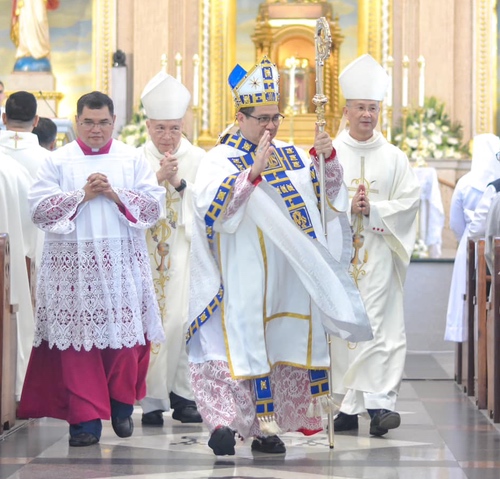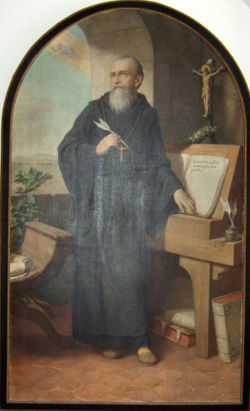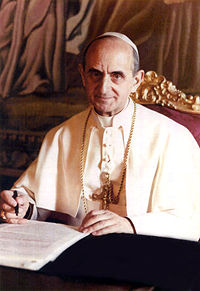
I was recently – for the first time – in Scandinavia where the state churches are Lutheran with bishops. They went through the Reformation in quite a different way to other parts of Europe, including how the Reformation developed in England. These churches are in full communion with Anglican Churches (with the Church of England, with the Anglican Church in Aotearoa, New Zealand and Polynesia, etc). Full communion means I can function as a priest there; their ordained persons can function as clergy here.
What I had not realised until visiting these churches: in these Scandinavian churches, you cannot be both a deacon and a priest! In these churches, nurses and other caring professions may be ordained as deacons; priesthood is a separate vocation from the diaconate. Both have their own pathways, separate training, and academic degrees.
Priests lead the gathered Christian community. Deacons lead the dispersed Christian community in service.
I have a number of articles on this site arguing for this per saltum form of ordination – being ordained directly to the office to which God is calling you. I was called to be a priest – I affirmed that God was calling me to the diaconate because my church would not ordain me to the priesthood without spending about a year as a deacon. I am not convinced by those who insist that, when I was ordained priest I continue to be a deacon, as if one is collecting a set, and the most valuable (bishop) being a person who has collected the full set!
There are priests (and bishops) who loudly repeat, “I am still a deacon!” Usually with unironic pride rather than diaconally-appropriate humility!
Now here are Porvoo churches, these Nordic and Baltic Lutheran Episcopal Churches, who are in full communion with us, who agree with my challenge to the nesting-clergy-doll theory that inside every bishop there is a priest; inside every priest there is a deacon… Along with the nesting-clergy-doll approach comes a devaluation of the diaconate, subdividing the diaconate into two new orders: “transitional deacons” and “vocational deacons” also called “permanent deacons” (as if bishops were once “transitional priests”!)
But wait, there’s more! Whilst in Scandinavia, I heard of people being ordained priest in a Scandinavian Church and then going to serve as a priest in the Church of England. So there are priests in the Church of England who have never been, let alone currently still are, deacons!
These Scandinavian Churches, in full communion with Anglicanism, are yet another challenge to the nesting-clergy-doll theory. Not only is it right and just to ordain (per saltum) to the order to which God is calling, but it is already happening, and not only in churches in full communion with Anglicanism, but it has been the process involved with priests serving within Anglicanism now.
UPDATE: Latvia has a Lutheran church with the episcopacy but doesn’t have deacons of any kind. I note: we (ACANZP) are in full communion with the Evangelical Lutheran Church of Latvia.
Some previous posts on this:
Transitional Priest – Vocational Bishop
A Bishop is not a Priest
The end of the dalmatic?
Per saltum ordination
To Confirm or not to Confirm?
Some useful websites of Scandinavian churches:
Swedish resources in English
The Porvoo Communion
Liturgies of the Norwegian Church
Thank you to liturgical scholars from these Scandinavian churches whom I befriended at the Congress of Societas Liturgica in Paris earlier this year, for the discussions we have had around these topics.
Do follow
The Liturgy Facebook Page
The Liturgy Twitter Profile
The Liturgy Instagram
The Liturgy Bluesky Profile
and/or sign up to a not-too-often email



Hm… it’s interesting to see how the per saltum has panned out in practice! I’m not fully convinced, but it does show how the diaconate and the priesthood are two different vocations and how our current practice obscures those distinctive vocations.
In the Scandinavian practice, does a bishop have to have been ordained a priest first? Or can they have been ordained a deacon and then be called to the episcopacy? Or do we consider per-saltum ordaining bishops (which, frankly, some folks in seminary would *love* because they’re in seminary waiting for a miter and a diocese to rule!)
We occasionally see it in the US where someone is ordained a permanent deacon, and after years of service the priesthood calling emerges. In this Scandinavian model, it doesn’t sound like that would be possible.
As a parish priest, I exercise some of the liturgical functions of a deacon (proclaim the Gospel, set the table, dismiss the people, bid the prayers, etc) – but if a priest can do that without being ordained a deacon, does that diminish the liturgical function of deacons?
I guess I return to this: if I can’t say I’m called to be a servant, can I say I’m called to be an elder/presbyter in the church? And if a bishop wasn’t first called as a servant and an elder, what makes them fit to be an overseer?
Thanks, Joseph.
Your own position is not simply theoretical; the church in which you serve (TEC) is in full communion with The Church of Sweden.
Firstly, as I’ve already highlighted, there is no such thing as being “ordained a permanent deacon”. I have seen ordinations and ordinals altered – I think this is very unwise. One is ordained a deacon. Full stop.
Yes, under the Scandinavian model one can be ordained a deacon and later find that God calls such a person to be ordained a priest. I do not know if one can be ordained a bishop per saltum there – I’m enquiring. We both know this has happened historically.
Your fourth paragraph highlights a significant issue. I’m sure we have both seen celebrations where there is a deacon present and does not exercise one or more of the roles you enumerate, but this is done by someone other than the deacon. Your paragraph calls for a much more serious renewal of the diaconate – so that it is taken for granted that there are always a number of deacons in every worshipping community.
Your last paragraph misunderstands Christianity: all the baptised are “called to be a servant”! Renewing the diaconate does not mean clericalising service!
We may need to seriously re-examine our understanding of ordination. Clearly, in the early church, there were two orders: overseeing eldership and outward-focused diaconate. The evolution of the episcopacy leaves the question: is this an order in which you and I have some sort of partial share as priests, or do priests have the fulness of overseeing eldership and we, by convention, delegate some of our role (eg ordaining) to a first-among-equals of us. The latter position certainly opens some fruitful ecumenical dialogue.
Thanks again for taking up the discussion. Blessings.
I think there are more gaps and a few exceptions to the ways ordination occurs. Bp Ambrose of Milan was called directly in 374, as a crowd proclaimed him to be a bishop. I served as a deacon at St Ambrose Episcopal Church in California (but his sparkles didn’t land on me or my boss, a priest!); I was priested by a TEC bishop who had been ordained priest in UK. MIT was midsummer, hit, and he wore a dramatic under his other garments. A reminder. I flew to Aotearoa 6 months after my deaconing, a new priest. Aons ago. Has much changed?
In an English diocese, I believe a Scandinavian deacon was ordained conditionally to the Anglican diaconate in 2014 or so.
Thanks, Tristan – but you yourself will acknowledge that this is a vague comment:
*it is possible the Scandinavian deacon could have been ordained by a woman bishop – 2014 being just before women bishops were accepted in the CofE
*it is possible that the Scandinavian deacon came from a non-Porvoo/independent Scandinavian body
*within its diversity, the CofE permits bishops who dissent to act according to their conscience, provided they do not deny the overall validity of Porvoo or of women’s ministry in law. A conditional ordination allows a bishop to proceed without formally declaring the first ordination invalid.
In any case – your comment does not alter the substantive point of my post.
Blessings.
I have always been uneasy about the transitional diaconate. In the Anglican Church of Canada, there is also common practice that the candidate for ordination to the priesthood begins the liturgy vested as a deacon, and after the laying on of hands, the stole is “adjusted” to hang pendant rather than over the shoulder. (And this occurs even though the rubrics to the ordination rite in the 1985 Book of Alternative Services, used in most dioceses, prescribe that the ordinand comes vested in alb (or cassock & surplice) only. I have in many parishes encountered among the laity an understanding of this as the ordinand being “promoted”. Extremely bad theology, both of the diaconate and of the priesthood.
Our diocesan ordinations this fall used the new Ordinal 2025 (authorized for trial use at General Synod in June). The rite for ordination of deacons includes, in place of the usual question “Do you believe that you are truly called by God and by the Church to the life and work of a deacon?”, for transitional deacons the question is ” It is the practice of our church that those called to the priesthood serve in the diaconate for a period of time. Do you believe you are called to this service?” In a way, it recognized that the person’s call is not to diaconal ministry, and that their time as a deacon is to be part of their training and preparation for prebyteral ministry. But I think it may diminish rather than emphasize the uniqueness of diaconal ministry.
I also not that, in the 1990s when the Diocese of Northern Michigan was moving to their total ministry model (teams of non-stipendiary presbyters, deacons, lay preachers, and catechists in each parish), those who were called to the priesthood were ordained to the diaconate “sub rosa”, in private ceremonies, and during the time of their “diaconate” (which was the bare minimum required by TEC canons) did not publicly engage in ministry other than what they had already been doing as lay persons. This was part of Bishop Kelsey’s very deliberate strategy to distinguish the roles of the different orders, and of the lay ministers.
Thank you so much, James, for your thoughtful reflection.
I note that the BAS (p.666) says that “a candidate for ordination may (my emphasis) be vested in an alb or surplice… as the ordaining… bishop shall direct.” So, I can understand that bishops read this as allowing them to direct something else. Our NZ Prayer Book simply has, “The bishop conducting the ordination shall direct what shall be worn by those participating.” (p.922).
Certainly, the “promoted” understanding is exactly the sense that my post(s) are attempting to work against.
I will need to spend more time looking at your trial ordinal and also how it differs from your BAS, but there are already alarm bells in what you write:
1) there is an ordinal difference between two different types of diaconate! and
2) there is already assurance at ordination to the diaconate that one will go on to be ordained priest – in NZ, that would be understood as “likely” but never “certainly” – and not to the point of making that formalised in one’s ordination to the diaconate!
Beyond that, I wonder how people are feeling about being ordained using a “trial” ordinal?! I see that it is by permission of the Ordinary. Here in NZ, we have changed our Constitution so that a bishop can authorise services. It is unclear (and disputed) whether a bishop can authorise a rite when there is already a formulary for such a service. Certainly, bishops do act as if they can. And bishops vary the agreed ordinal – for example, when ordaining priests and deacons in the same service, there have been all sorts of adaptations; and also when total ministry (since you mention it) was de rigueur; and in other cases also.
At which point does varying an ordinal become illicit? And at which point does it tip over to being invalid?
Blessings.
I should add that the Ordinal 2025 has not yet been officially published on the Anglican Church of Canada website, but is available in the General Synod papers.
https://gs2025.anglican.ca/wp-content/uploads/Report-008-Appendix-10-The-Ordinal.pdf
Thanks, James!